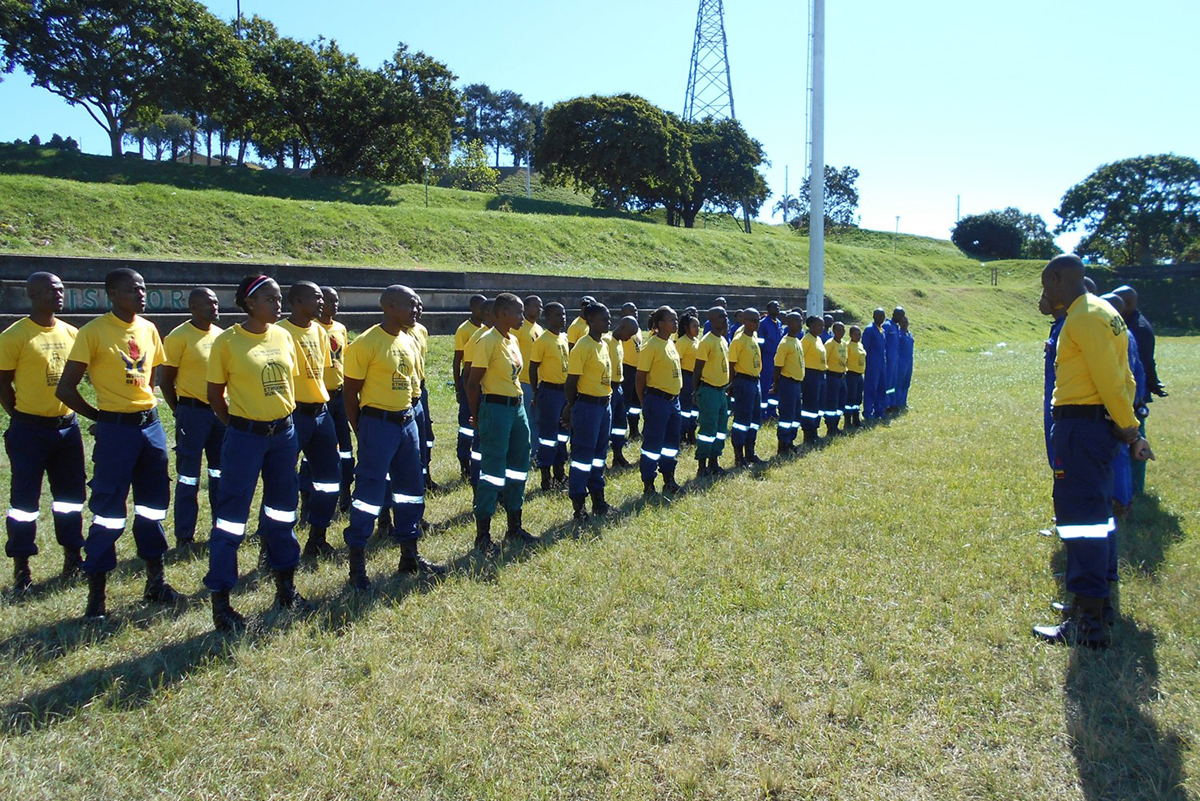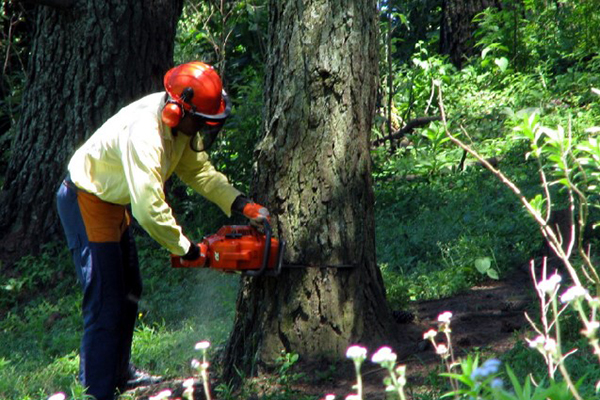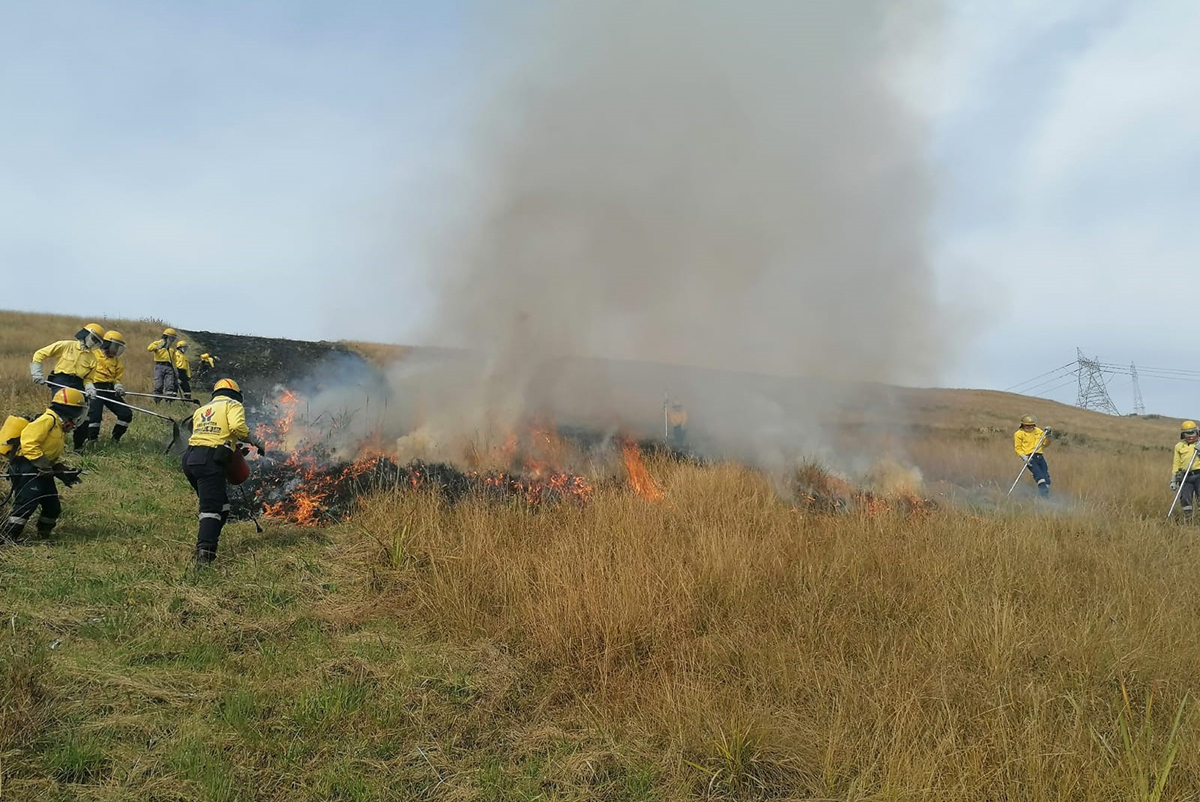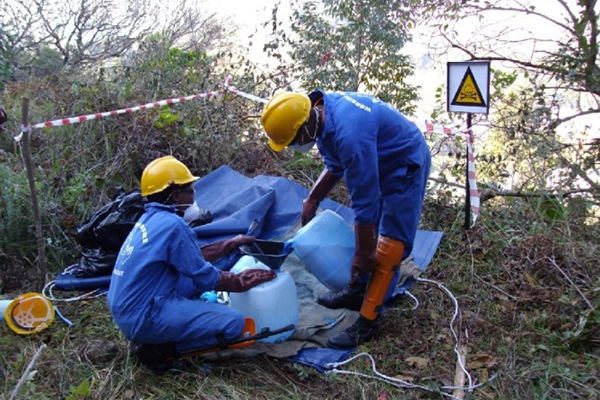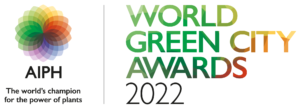Addressing the urban challenge
Breadth of the issue – How are the problem(s) that are being tackled by your initiative affecting citizens/local businesses or a significant component of the local wildlife?
EThekwini Municipality implements a range of biodiversity conservation work on natural sites in and around Durban. Threatened grasslands are an important focus area due to their diminished health and extent. This is largely due to the impacts of urban development (including agriculture, industry, and urban sprawl), uncontrolled fires, and invasive alien plants.
Grasslands support the livelihoods of all citizens in the eThekwini Municipal Area by providing ecosystem services such as carbon sequestration, thus mitigating against climate change, sediment retention, which helps to prevent erosion and enhance water quality. Grasslands are also home to a diverse range of endemic animals and plants. Furthermore, grasslands provide natural resources such as medicinal plants, plant materials, and grazing areas. If grasslands are not protected, many of the endemic species will become extinct, leading to loss of biodiversity and critical ecosystem functions.
The Municipality uses the Systematic Conservation Assessment (SCA) and the SCA is particularly useful in assisting with the prioritization (and ranking) of areas of conservation significance. Furthermore, it assists in shortlisting sites for environmental protection and management. Current management actions on natural areas focus primarily on controlling invasive alien species, and application of prescribed burns through the Fire and Invasive Species Control Programme.
Depth of the issue – How seriously are the problems being tackled by your initiative impacting the life of the citizens/businesses/wildlife concerned?
The local grasslands ecosystems in eThekwini Municipality require periodic burning, to ensure successful germination and regrowth of fire-dependent plant species. This, along with the removal of invasive alien plants, helps to maintain the quality of natural grassland ecosystems and in turn, this helps to ensure improved ecosystem service delivery to residents. Examples of these services include; better attenuation of water during storms and release of water during dry periods, soil conservation, improved support of pollinators, better grazing for livestock, improved ecological corridors that assist migrating organisms, and improve gene flows. All of these also help local communities to adapt to the threat of climate change.
The power of plants and natural ecosystems to deliver benefits
How is the initiative shaped by scientific evidence of the potential for plants and natural ecosystems to deliver benefits?
The initiative is innovative as it provides both ecological and social-economic benefits to the Municipality by aiming to restore critical biodiversity areas while also contributing to the creation of sustainable green jobs, providing training to previously marginalized communities, and maximizing the provision of ecosystem services.
During the burning season, fires are primarily applied to grassland sites identified by the Municipality as having priority conservation significance; however, during the wet season, other methods of Invasive Alien Plant control, such as mechanical and chemical, are used to improve the sustainability and protection of the ecosystem and its natural processes. These two management interventions require both the on-going Invasive Alien Plant density verifications and annual Veld Condition Assessments (VCA). Sites are prioritized according to infestation levels and budgets are allocated as required.
Follow-up control ensures the long-term maintenance of each asset. Pre-follow-up assessments indicate the density of IAP infestations as an index of the site condition and are reported on a monthly basis. Annual VCAs report on more detailed indices, relating directly to the ecosystem services delivered by these sites. These include soil stability (water quality), vegetation cover (carbon sequestration, water supply, flood attenuation), and species diversity (biodiversity protection and resource protection).
Maintenance is funded through a number of mechanisms. Budgets set aside by the Municipal Treasury Department ensure that land acquisition, general management of sites, and IAP control can be undertaken. External funding agencies (including government agencies and both the local and international private sector) are also being lobbied for additional funds.
How has the city exploited the potential of plants and associated ecosystems to deliver more than one benefit?
The Fire and Invasive Species Control Programme collaborates with volunteer Conservancy organizations through the herbicide assistance initiative. The respective volunteer organizations are active in controlling invasive alien species in areas demarcated for conservation, in the eThekwini Municipal Area. As the objectives of these volunteer organizations align with those of the Municipality, they contribute their own resources, time and effort to physically cut, treat and remove Invasive Alien Plants. The programme provides support in the form of technical advice, training, basic equipment, and herbicides. Numerous conservancies within the eThekwini Municipality have benefitted from this initiative.
The programme also collaborates with research Institutes, particularly the University of KwaZulu-Natal, through the Durban Research Action Partnership (D’RAP). This is a research partnership between the eThekwini Municipality and the University of KwaZulu-Natal (UKZN). The partnership was developed to advance knowledge in biodiversity conservation and management within the context of global environmental change. Through the partnership, collaborative research is conducted within the eThekwini Municipal Area in a range of disciplines including environmental, biological, social science, governance and economics. The partnership has culminated in a number of tangible outputs, including students’ presentations, and research publications.
The programme also generates much needed environmental and fire awareness for local communities and schools and also creates a safe, healthy and secure environment in terms of fire hazards to people, properties and natural assets.
Innovative and Collaborative Solution
How does the initiative show evidence of feasibility, including on-going financial and logistical support?
The Municipality is responsible for the management of vast areas with diverse natural environments and also provides service delivery to nearly 4 million residents. The current state of biodiversity within the EThekwini Municipal Area may be under impending threat due to climate change, invasive alien plant invasions and habitat destruction, and this requires that the Municipality invests in managing and protecting its natural ecosystems and biodiversity.
The negative threats posed by invasive alien species include reducing the ability of the land to support people and livestock, drastically interfering with natural ecosystem processes. As a result, the Municipality is employing the appropriate Invasive Alien Plant control methods, including through the use of fire. This initiative plays a significant role in managing the natural environment and ensuring the sustainability of ecosystem services these natural environments provide. It also improves citizens livelihoods and quality of living, as it assists the Municipality to account and deliver on its legal objective of service delivery to the people.
Unemployment – particularly among youth is another major challenge in South Africa. Initiatives such as the Municipal FISC programme bridge the unemployment gap by providing jobs to people who are unemployed, from previously marginalised communities. Preference for employment is mostly given to African youth with a primary focus on females. The accompanying training and skills development opportunities provided by the programme are an excellent means for the Municipality to contribute to South Africa’s National Green Economy objectives.
In what ways is the initiative innovative?
Land acquired by eThekwini Municipality, which contain nationally and locally endangered grassland types, has increased exponentially in the past years. Many of these grasslands are threatened by Invasive Alien Plants and the appropriate control methods are now considered essential. Invasive alien plant infestations on allocated project areas have been significantly reduced through the FISC Programme operations, grassland sites also have improved biodiversity due to the required controlled burns, and there is a reduced risk of dangerous run-away fires. This initiative enhances indigenous biodiversity in that it further attracts indigenous herbivores and eventually predators once the vegetation strata are rehabilitated or restored. Based on the subsequent regular follow-ups, environmental integrity is eventually restored and the natural ecosystem services associated with an area, gradually return to their natural flow regimes and the quality of life for citizens is improved.
The programme has provided numerous (over 100) sustainable green jobs and skills to previously marginalised communities by employing local labour. The local FISC labour has high levels of expertise, including the use of machinery for large tree removal, use of herbicides for high success rates; fire control for optimal ecosystem management and access, a dedicated rope access team for work in steep areas and cliff-lines, and are regarded as a best practice model and one of the most effective poverty relief and skills development programmes. The programme has also developed and mentored Small Medium and Micro Enterprises to undertake fire and invasive alien plant control work.
How is the initiative supported by collaborative working across disciplines and sectors?
Given the need to ensure optimal invasive alien plant control operations, as well as adherence to best practices on all sites, the Municipality appoints an external site-auditor to provide an independent observation of work efficiency conducted by the service providers, whilst also recording Health & Safety compliance in each site as well as monitoring of environmental impacts/benefits on each site. Furthermore, the service provider verifies all the sightings of emerging weeds reported on the Durban Spotter website.
Veld Condition Assessments (VCA) were introduced at project inception to form a baseline assessment for all grassland areas acquired by the Municipality. These assessments produce indices that inform management practices, and in particular, decisions about the frequency of burning. As part of monitoring the efficacy of the current burning regimes, the FISC programme undertakes Veld Conditions Assessments on all grassland sites prior to initiating block burns. In that way, VCA results form part of both decision-support for burning and long-term grassland monitoring.
Invasive Alien Plant Initiatives implemented by the Municipality are also audited at national government, by representatives from the Department of Fisheries Forestry and Environment (DEFF). The Municipality develops an Invasive Alien Plant management plan according to national regulations and guidelines for the monitoring, control, and eradication of Invasive species. Subsequent to submitting the management plan, the national government deploys inspectors to verify the submitted information, as part of the DEFF’s review of the submissions. Thereafter, a Letter of approval is issued, acknowledging, and approving the IAS Management of eThekwini Municipality.
How does the initiative demonstrate evidence of community support?
The IAP and Fire control work is currently implemented by a specialist fire management service provider (Working on Fire). Monthly, the appointed service provider reports on the achievements of the programme in terms of restoration (control IAP and application of controlled burns) achievements and challenges. Monthly progress reports include:
- name and locality of site worked on
- maps for each area cleared/burned
- area restored (burnt or cleared) in square meters for each management block
- days taken for teams to clear these areas
- Invasive Alien Plants encountered with approximate densities for top ten plants
- Emerging weeds: lists of potentially new or emerging weeds encountered across the Municipality (i.e., species, number of controlled species and areas wherein reported)
- Research projects
- Notes on control methods used for each species
- Details for all fire control activities implemented including maps
- Monthly key performance indicators relating to staff numbers and demographics including a breakdown of project spend, person-days worked, training undertaken and training days.
- Other relevant information including problems encountered.
See below an example of the FISC Programme Key Performance Indicators for the year 2021.
Key Performance Indicator Achieved
Total IAP control (Ha) 448.9
Total initial IAP control (Ha) 36.2
Total follow-up IAP control (Ha) 150.3
Total maintenance clearing (Ha) 262.4
Total training courses 8
Total training days 443
Fire breaks cleared (ha) 6.19
Tracer belts opened (m) 10592
Total hectares burnt 371.1
Total jobs created 45
Total person days 11283
Total spent on wages R 2 439 317
Total spent on skills development and Training R 80,755
Implementation, Impact and Replicability
How does the initiative demonstrate evidence of a track record of success against pursued objectives?
The EThekwini Municipality’s Fire and Invasive Species Control programme has been operational since 2009 (12 years) and has continued to expand operations during this time. Importantly, the programme is now housed within the Restoration Ecology Branch, which was founded in 2011. The founding of a dedicated division within the Municipality for focused ecological restoration work was largely a result of the recognised urgency for reversing biodiversity loss and the need for improved ecosystem-based adaptation to climate change. The Municipality has had a sustained commitment to growing the budget of the Fire and Invasive Species Control programme, with the programme’s funding, has grown from around R3 million ZAR per annum to the current R15 million ZAR per annum. The number of sites managed by the programme has also increased during this time, from two to thirty, and the total hectares now actively managed amounts to 848.91ha.
How has the initiative had a ripple effect beyond the scope of the initiative itself, thereby demonstrating a change in the city’s and/or its partners’ way of working with plants?
EThekwini Municipality acknowledges the need and the role of public participation in ecosystem restoration. Such interventions facilitate socio-ecological resilience by assisting communities to reduce their vulnerabilities to future disasters in implementing community-based approaches learned through projects. Given the cost implications in sustainably managing invasive alien species, Local Authorities can never get on top of Invasive Alien Plant infestations without the involvement of the public. Considering everyone has a duty of care in protecting the natural environment, there comes an obligation for Local Authorities to resource its citizens in order to make a meaningful contribution towards ecosystem restoration. Resourcing citizens could include awareness, involvement, and any other form of support.
The Municipality compiles a list of Invasive Alien Plants found in eThekwini Municipality, including emerging weeds, and these are printed out in posters and flashcards known as Beautiful but Dangerous Posters & Flashcards, which are distributed free of charge to the citizens of eThekwini Municipality. Furthermore, the Municipality provides training on the identification and control of Invasive Alien Plants. The Training is free of charge and is only for citizens of eThekwini Municipality. Finally, there is a Herbicide Assist Project, once again to extend a helping hand to the citizens of eThekwini Municipality with herbicides. Controlling Invasive Alien Plants can be an expensive undertaking, and the Municipality recognizes that by helping its citizens the Municipality is also helping itself in expanding Invasive Alien Plant management across the Municipality.
How have other cities expressed interest in the initiative, or what potential does it have to interest other cities and be customised to their own circumstances?
The Municipality conducts annual Veld Condition Assessment (VCA’s) and Fixed Point Photography Monitoring (FPPM) assignment, on selected municipal-owned grassland sites. The VCAs together with the FPPM are conducted in areas where the Municipality has implemented Fire Control and/or Invasive Alien Plant management, under the FISC Project. The process is required to determine the impact of the FISC Programme operations on the ecological integrity of each site and to advise the Controlled Burning Programme for the ensuing Fire Season.
The VCA’s along with FPM and FPP provides a simplistic yet comprehensive assessment of the current condition of each site while allowing for monitoring the changes/trends in species richness and composition over time. This allows Municipal managers to manipulate the ecosystem with simple, effective, and cost-efficient measures to maintain biodiversity management objectives through using prescribed burning. For instance, burning regimes which were typically biennial or triennial can now be assessed with greater confidence, based on the veld response to previous fires. The objectives can include but are not limited to the control of woody encroachment into the grasslands, control of alien invasive species, creating ecosystems to accommodate specific plant and animal species.
Sustainability and Resilience
What efforts have been made to reduce the carbon footprint of the initiative?
In recognizing that there are still many areas within the eThekwini Municipal Area that would benefit from the burning regimes and invasive alien plant control activities offered by the Fire and Invasive Species Control Programme, the Municipality has extended the work beyond its property boundaries. Many requests from conservancies and private landowners for burning of grassland are received each year. These requests are prioritized based on the biodiversity value of that grassland, and other factors including safe burning weather, permission from the emergency services Department, and the workload, or schedule of conserved grasslands to be burned.
The Municipality has also had several Programmes and Projects that are implemented by various Municipal Departments, and are dedicated to the monitoring, control, and overall management of Invasive Alien Plants in the EThekwini Management Area. Departments such as the Natural Resource Department; Parks, Leisure & Cemetery Department; Roads & Storm Water Department, all play prominent roles in the control of Invasive Alien Species within properties vested with them.
How have the anticipated impacts of climate change been considered?
The Fire and Invasive Species Control Programme can be adopted by other cities as it provides an excellent demonstration of how a city can contribute to the national Green Economy objectives. Although the Municipality initiated the Fire and Invasive Species Control (FISC) programme to facilitate the control of invasive alien plants in critical biodiversity areas of the Municipality, it has simultaneously contributed to the provision of sustainable green jobs by providing employment and training to communities that have been previously marginalized.
Through the programme, much needed environmental and fire awareness is now helping communities and schools create safe, healthy, and secure environments with reduced fire hazards to people, properties and the natural environment. By sustaining the supply of ecosystem services, alleviating poverty, increasing skills, and reducing risk, the FISC programme has become a strategic tool in increasing the adaptive capacity of eThekwini Municipality and integrating, localising, and urbanising the global biodiversity and climate change agendas.
What processes does the initiative include for it to be considerate in its use of soils and other natural resources?
The office space where the FISC Programme staff is based is in very close proximity to the project sites or Municipal-owned grasslands. This reduces the distance travelled to the site and, as a result, the amount of fuel used on each day. Furthermore, because the project employs locals, employees do not need to drive to work, but rather walk, which has a significant impact on personal carbon emissions in the city.
Monitoring, Maintenance, and Management
How has the initiative been designed and implemented so that long-term needs for management and maintenance are reduced and can be met?
The grasslands in EThekwini Municipality are dominated (numbers of species) by short herbaceous (nonwoody) and geoxylic suffrutice (underground tree) vegetation. As such the carbon stored within the aboveground plant structures contains a small proportion of the total ecosystem’s carbon. Furthermore, the carbon bound up in the aboveground biomass of these plants is relatively short-lived due to grazing, fire, and seasonal senescence. In addition to this, the perennial grasses that dominate these systems (in terms of biomass) have large and extensive fibrous root systems that contribute 60-80% of the ecosystem’s biomass carbon. The belowground organs of these grass and non-grass plants can extend for several meters below the surface, and combined, contribute significantly to soil carbon storage (up to 81% of total carbon in the ecosystem). An added benefit of better water infiltration results from the high levels of organic matter and good soil structure.
Restoration of degraded grasslands by limiting soil disturbance, management, thoughtful use of prescribed fire, and planting native species with deep root systems are all essential for increasing carbon stocks. Furthermore, seeding of indigenous grass or legume species into degraded grasslands also improves belowground production and soil fertility. While the recovery of soil carbon can be a slow process and can take many decades to centuries most of the grasslands currently under restoration management in EThekwini Municipality are in good condition, so ongoing protection and careful management are considered cost effective. Learnings gained are also helping to confirm ways to restore degraded grasslands.
What protocols are in place to facilitate monitoring of results?
By nature, restoration is best planned for long-term sustainability, as different stages in the life of restoration projects are considered, particularly – from early planning to post-implementation monitoring. The control of invasive alien plants, mainly in eThekwini Municipal grassland areas, consists of 3 stages: Initial control, follow-up control, and maintenance control. The rate of infestation and IAP densities on particular sites govern what stage of treatment needs to be employed. According to Best practices, there is always a measure of regeneration of the cleared invasive alien plants after the initial clearing work has been done. As such, proper follow-up work is essential and is therefore conducted regularly on the sites. If follow-up clearing is not done, the progress made in the initial clearing exercise can be lost within a few years as the invasive alien plants become re-established. Our research and years of implementation have shown that if follow-up clearing is executed properly and consistently, the costs and time expended on each consecutive follow-up reduces drastically. The “maintenance” stage can then be reached, where monitoring will be required for any seedlings that may have germinated.
Over the years, the Municipality has secured the necessary community support for long-term sustainability of the initiative. This has been achieved through engaging local communities in the management and maintenance of local natural assets, which has improved Local Economic Development, boosted the green economy, and, most importantly, raised awareness about environmental integrity and human benefits.
How has the initiative been enhanced in response to monitoring of results?
The EThekwini Municipality’s Fire and Invasive Species Control programme makes no use of imported soils, or of fertilizers or pesticides. The approach taken is to ensure that only locally indigenous plants are used in the restoration of grasslands. Although some herbicides are used for the control of invasive alien plants, the use of these chemicals is strictly monitored to ensure that no accidental spillage occurs, and where needed the applications are very targeted. Herbicide selection is for those with relatively short soil life to ensure that any possible contamination of downstream areas is eliminated. Regular and ongoing monitoring and evaluation of work has been built into the workstream, to ensure that each site receives the necessary consideration when decisions about fire control or control of invasive species are made. This includes an annual ‘veld condition assessment’ for measuring grass biomass and species diversity on each site, that results in better decision making for fire control. In addition, the programme makes use of a citizen science tool (naturalist) to track biodiversity on the sites.



















